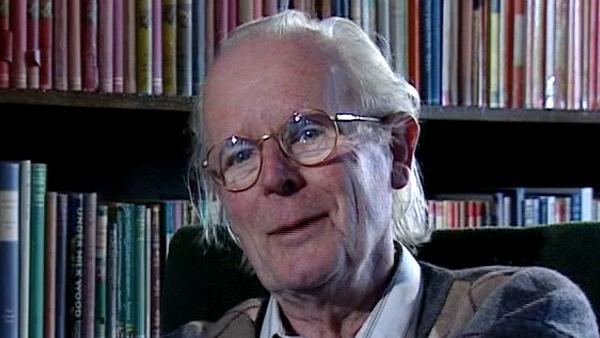NEXT STORY

Unstable flying animals
RELATED STORIES

NEXT STORY

Unstable flying animals
RELATED STORIES


|
Views | Duration | |
|---|---|---|---|
| 11. The notion of analogue in science | 1 | 1190 | 02:22 |
| 12. Trying to design an unstable aeroplane | 1056 | 01:32 | |
| 13. Unstable flying animals | 1 | 1069 | 02:36 |
| 14. Difficulty publishing papers in the 1950s | 1174 | 01:37 | |
| 15. Politics at Cambridge | 1211 | 02:04 | |
| 16. The Communist Party at Cambridge | 1270 | 01:29 | |
| 17. Dealing with stories of Stalin's excesses | 1258 | 03:58 | |
| 18. Marxist philosophy. Experimenting with temperature acclimatisation... | 1 | 1144 | 02:47 |
| 19. Holistic versus mechanistic | 1 | 1284 | 03:35 |
| 20. Becoming a biologist | 2 | 1179 | 03:10 |


It started during the war, when I was working as an aircraft engineer. When I realised that it would actually pay, if you could do it, to design an unstable aeroplane. I should explain that aeroplanes have tailplanes and fins on the back for the same reason that darts have feathers on the back. If you throw a dart and it sort of goes off course a bit, the wind on the feathers bring it back straight, and if an aeroplane sort of slightly goes up or down, then the wind on its tailplane brings it straight again. If you took it off... if you took the tailplane and the fins off, then the aeroplane wouldn't be stable and the pilot couldn't fly it, because as soon as it started veering off, he wouldn't be quick enough to bring it back on. But for reasons, sort of... some of them are obvious and some of them aren't, if you could somehow design an automatic pilot to design the unstable... to fly the unstable aeroplane, it would be a good thing, at least in military aeroplanes, it would turn round corners quicker, it... it would find it easier, you see, to turn corners, and it would have other advantages. And I thought about this quite hard in, oh I suppose '44 or so, '43 or '44, but it was clear at that time that the electronics weren't up to it, we just couldn't make the electronic machinery to work. I'm told, by my young friends, that there are aeroplanes out there today, military aeroplanes, which rely on this principle, there are much better electronics nowadays.
The late British biologist John Maynard Smith (1920-2004) is famous for applying game theory to the study of natural selection. At Eton College, inspired by the work of old Etonian JBS Haldane, Maynard Smith developed an interest in Darwinian evolutionary theory and mathematics. Then he entered University College London (UCL) to study fruit fly genetics under Haldane. In 1973 Maynard Smith formalised a central concept in game theory called the evolutionarily stable strategy (ESS). His ideas, presented in books such as 'Evolution and the Theory of Games', were enormously influential and led to a more rigorous scientific analysis and understanding of interactions between living things.
Title: Trying to design an unstable aeroplane
Listeners: Richard Dawkins
Richard Dawkins was educated at Oxford University and has taught zoology at the universities of California and Oxford. He is a fellow of New College, Oxford and the Charles Simonyi Professor of the Public Understanding of Science at Oxford University. Dawkins is one of the leading thinkers in modern evolutionary biology. He is also one of the best read and most popular writers on the subject: his books about evolution and science include "The Selfish Gene", "The Extended Phenotype", "The Blind Watchmaker", "River Out of Eden", "Climbing Mount Improbable", and most recently, "Unweaving the Rainbow".
Tags: engineer
Duration: 1 minute, 32 seconds
Date story recorded: April 1997
Date story went live: 24 January 2008